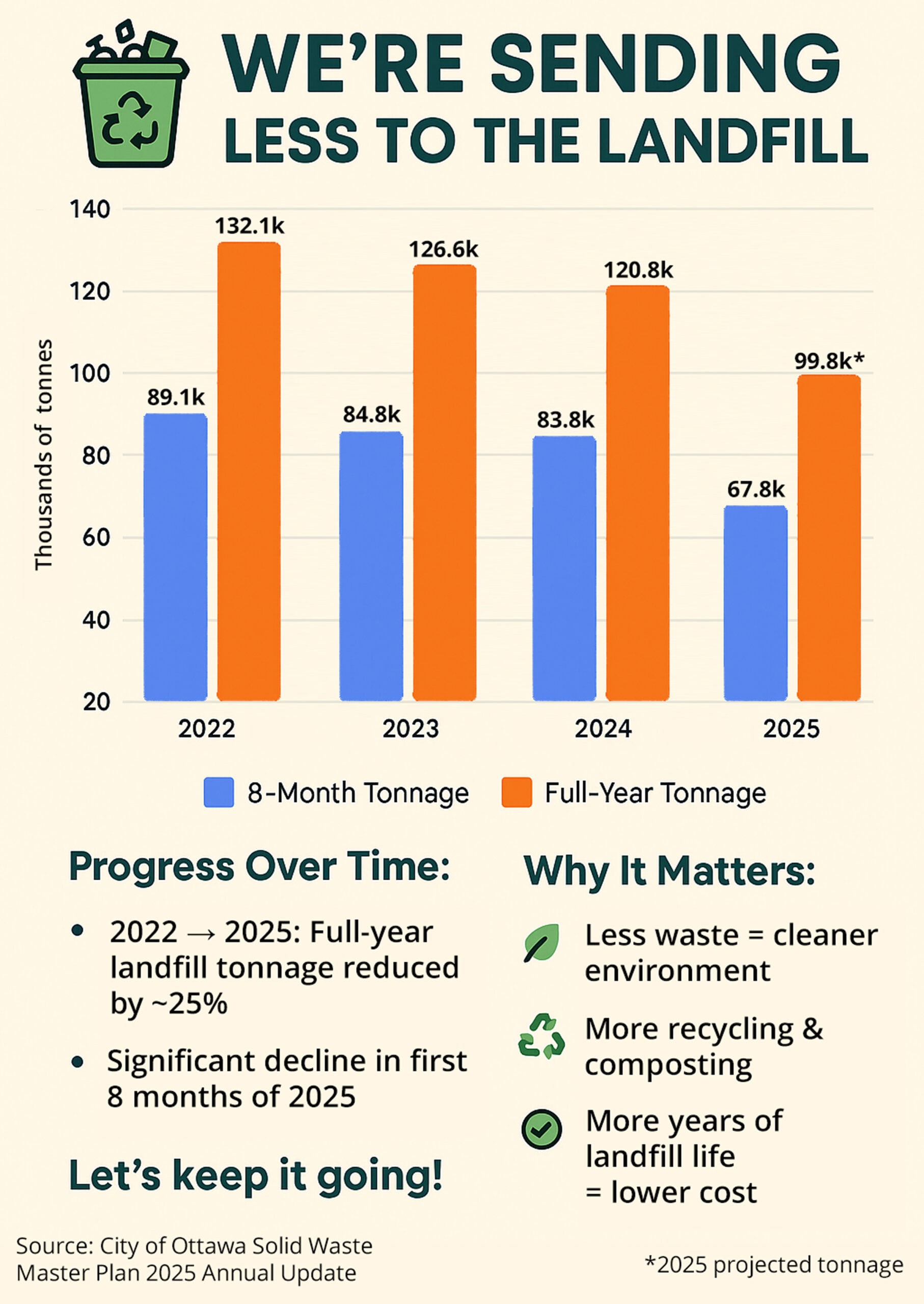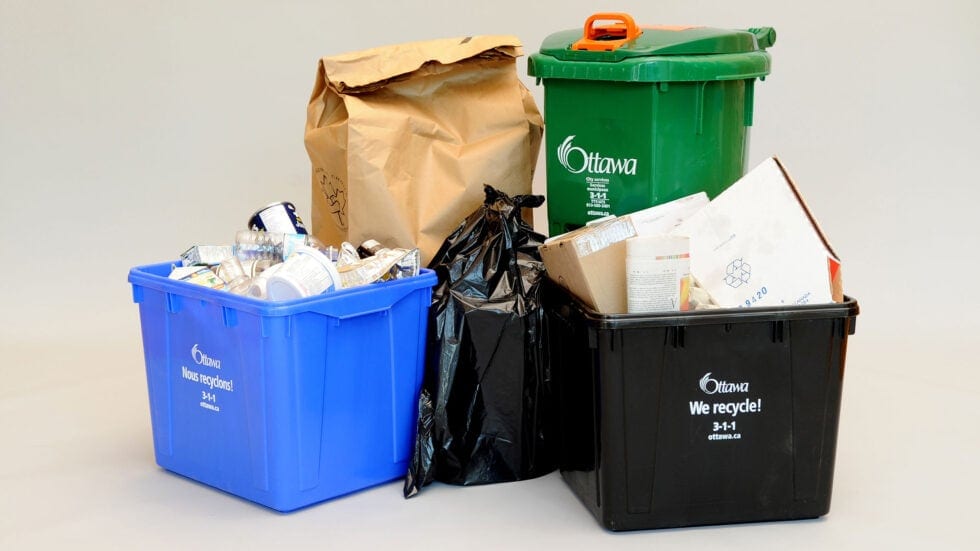Good news: New data from the City of Ottawa shows that the amount of waste that residents are sending to the landfill has been trending downwards since the new 3-item garbage limit was introduced in September 2024.
Garbage tonnage sent to the landfill decreased by 15,000 tonnes during the first 8 months of 2025, compared to the same timeframe in 2024. That’s about 25% lower than in 2022.

City staff say the drop in tonnage is due in part to compliance with the new garbage limit. Other factors, such as reduced consumption patterns influenced by economic conditions, can also affect waste generation rates. They also say this reduction has not been accompanied by a corresponding increase in incidents of illegal dumping.
About 310,000 households receive waste curbside waste collection.
- On average, fewer than 1% of households exceeded the three-item garbage limit during a collection
- On average, fewer than 1% of households received a courtesy tag for setting out oversized garbage containers
- In Q3 2025 (July to September), a total of 13,500 “excess waste” tags were issued city-wide for households that exceeded the 3-item limit. That’s down from the previous two quarters: 16,300 in Q1 and 23,100 in Q2.
The data comes from the Solid Waste Master Plan 2025 Annual Update, received by the Environment and Climate Change Committee this week.
Less waste heading to the landfill is good for the environment, it means we’re recycling and composting more, and it extends the life of the Trail Road Landfill, which lowers costs to residents. Thank you to residents for your patience and co-operation during this transition.

